Region Mexican
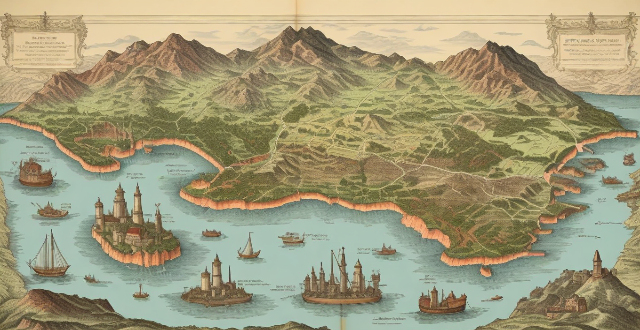
How do regional variations affect the flavors in Mexican dishes ?
Mexico's culinary heritage is shaped by regional variations in climate, geography, history, and cultural exchanges, which significantly impact the flavors of Mexican dishes. Coastal regions are known for seafood and citrus fruits, while highlands and mountainous areas favor meats like sheep and goat and specific chilies. Tropical regions boast an abundance of fruits and spices like cinnamon and vanilla. Spanish influence introduced olive oil, wine, sheep, and cattle, particularly in northern regions. Indigenous traditions keep corn and pre-Hispanic ingredients like amaranth and chia seeds alive in some areas. Examples of regional specialties include Oaxaca's complex mole sauce and Yucatan's cochinita pibil. These regional differences contribute to the diverse and vibrant tastes that make Mexican cuisine globally beloved.
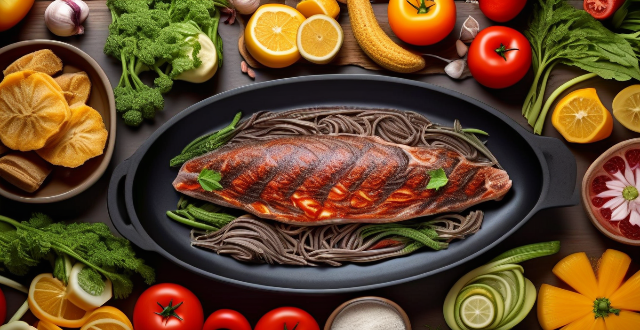
How does the use of chilies contribute to the distinctive taste of Mexican food ?
Chilies play a pivotal role in Mexican cuisine, contributing heat, flavor complexity, color, and cultural significance. They offer varying intensities of spiciness, from mild to very hot, and their fruity or earthy flavors complement other ingredients. Visually appealing with vibrant colors, chilies also have nutritional benefits like antioxidants and metabolism boost. They are versatile in cooking, used fresh, dried, or smoked, and pair well with acidic and herbal ingredients. Chilies are integral to traditional dishes like enchiladas and mole sauce, showcasing their essential role in defining the unique taste profile of Mexican food.
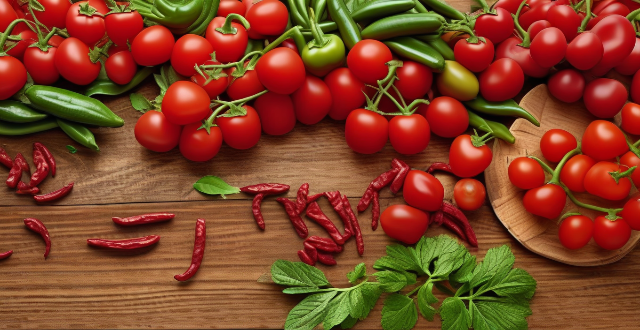
What are some traditional Mexican flavors ?
Mexican cuisine is known for its bold and vibrant flavors, which are a result of the country's rich history and diverse cultural influences. Some of the most traditional Mexican flavors include chili peppers, herbs and spices, fruits and vegetables, dairy products, and meats and seafood. These flavors come together to create the vibrant and delicious cuisine that Mexico is known for.
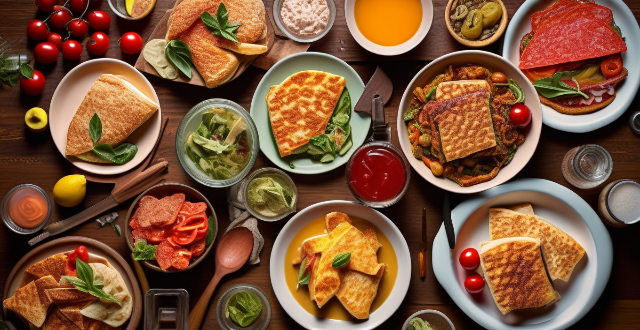
Can you suggest popular dishes that showcase genuine Mexican flavors ?
Mexico's vibrant cuisine blends indigenous ingredients and Spanish cooking techniques. Popular dishes include a variety of tacos, enchiladas, chiles rellenos, quesadillas, authentic soups and broths, antojitos (snacks), street food, and beverages like horchata and agua fresca. These dishes showcase genuine Mexican flavors and the country's rich culinary heritage.

How do you describe the taste of authentic Mexican cuisine ?
Mexican cuisine is a vibrant and complex blend of flavors that can be both bold and subtle. Here are some key characteristics that describe the taste of authentic Mexican food: ### Spicy Heat Chili peppers and spices like cumin, oregano, and cinnamon add depth of flavor to many dishes. ### Acidity and Tanginess Lime juice and tomatoes provide refreshing acidity and tanginess, while also contributing sweetness. ### Earthy and Nutty Flavors Beans, corn, and nuts offer earthy undertones and richness to Mexican cooking. ### Sweetness and Fruitiness Fruits such as pineapple and mango, as well as vegetables like sweet potatoes, bring a touch of sweetness to savory dishes. ### Umami Richness Cheese and slow-cooked meats contribute deep, savory flavors to Mexican cuisine. ### Herbaceous Notes Cilantro and epazote provide distinctive, fresh flavors that are essential in traditional cooking. ### Texture Variety Crunchy vegetables and creamy avocado-based sauces offer a range of textures that balance spicier elements. ### Bold and Aromatic Garnishes Onions and cilantro are often used as garnishes, adding sharpness and freshness to dishes. Overall, authentic Mexican cuisine is a harmonious combination of spicy, tangy, sweet, umami, herbaceous, and textural elements that create a complex and satisfying gustatory experience.
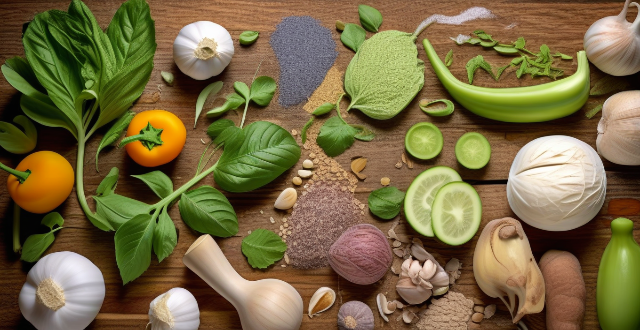
What ingredients are commonly used in Mexican cooking to create its unique flavor profile ?
The article provides an overview of the key ingredients used in Mexican cooking, including chili peppers like ancho, jalapeño, serrano, and habanero; herbs and spices such as cumin, coriander, oregano, and cilantro; and other ingredients like tomatoes, onions, garlic, lime juice, epazote, and hominy. It explains how these ingredients contribute to the distinctive flavor profile of Mexican cuisine and encourages readers to experiment with creating authentic Mexican meals at home.

What is the significance of lime and avocado in enhancing Mexican culinary flavors ?
Mexican cuisine is renowned for its vibrant colors and bold flavors, with lime and avocado playing pivotal roles in enhancing these characteristics. Lime adds acidity and brightness, balancing rich ingredients and acting as a marinade or garnish. Avocado contributes creaminess and nutrition, offering versatility in both sweet and savory dishes. Together, they create harmonious blends like guacamole and tacos al pastor, enriching the culinary experience and reflecting Mexican cooking traditions' emphasis on freshness and balance.

How do Mexican spices and seasonings combine to create their iconic flavors ?
**Mexican Spices and Seasonings: A Flavorful Fusion** Mexican cuisine is renowned for its vibrant flavors, derived from a mix of spices and seasonings that reflect the country's rich history and cultural diversity. These ingredients add depth and character to dishes, creating iconic Mexican flavors through careful combination and layering. Key components include chili peppers like ancho, poblano, jalapeño, serrano, and habanero; herbs such as cilantro, epazote, and marjoram; aromatics like onions, garlic, and tomatoes; dried spices including cumin, coriander seed, cinnamon, and clove; and condiments like lime juice, salt, and peppercorns. The signature flavor is created by layering heat and sweetness, balancing herbal notes, building depth with aromatics, enriching with dried spices, and finishing with acidity and salt. This intricate blend of flavors makes Mexican food beloved worldwide.
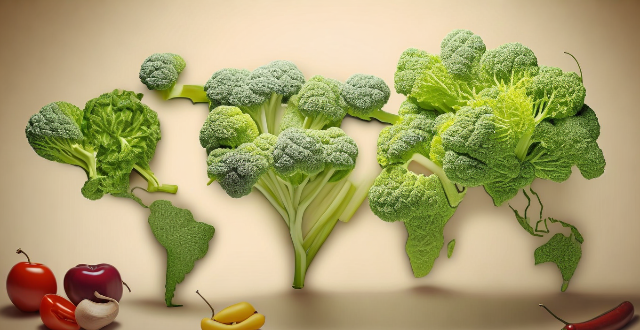
What role does cilantro play in Mexican cuisine in terms of flavor ?
Cilantro is a key herb in Mexican cuisine, adding flavor, aroma, and freshness to dishes. Its unique taste, described as citrusy, grassy, and slightly peppery, complements the bold and spicy flavors of Mexican cooking. Cilantro is used in salsas and guacamole, soups and stews, marinades and rubs, tacos and enchiladas. Its citrusy notes cut through rich ingredients, grassy undertones provide a refreshing contrast, and its peppery bite adds complexity. Cilantro is essential for enhancing the taste and aroma of Mexican dishes.

How do food festivals impact tourism in a region ?
Food festivals significantly impact tourism in a region, offering economic benefits and promoting cultural exchange. They attract visitors, boost spending, create jobs, and support local businesses. Culinary diversity, community engagement, and media exposure enhance the region's brand image. Sustainability is crucial for supporting local farmers and managing waste. Successful examples include tomato, wine & cheese, and seafood festivals. Food festivals are powerful tools for driving tourism and enriching the travel experience.
![What are the best cycling routes in [city/region] ?](/imgs/2f8b31ee-f62a-46e3-8828-37a4af062f9b.png)
What are the best cycling routes in [city/region] ?
Cycling is a great way to explore the beautiful landscapes and attractions of [city/region]. Here are some of the best cycling routes that you can take: 1. Coastal Route: Start at [location] and end at [location]. Distance: [distance]. Difficulty level: [level]. Scenic spots: [spots]. 2. Countryside Route: Start at [location] and end at [location]. Distance: [distance]. Difficulty level: [level]. Scenic spots: [spots]. 3. Mountainous Route: Start at [location] and end at [location]. Distance: [distance]. Difficulty level: [level]. Scenic spots: [spots]. 4. Urban Route: Start at [location] and end at [location]. Distance: [distance]. Difficulty level: [level]. Scenic spots: [spots]. Remember to bring essential items such as water, snacks, a map, and a first aid kit. Wear appropriate clothing and gear, and always follow traffic rules and regulations.

What is the potential for wind energy in my region ?
The potential for wind energy in a region depends on geographical features, wind speed and consistency, governmental policies, environmental and social considerations, and infrastructure accessibility. Coastal areas, plateaus, mountain passes, and open plains typically have better wind energy potential due to consistent wind patterns and less obstruction. High average wind speeds and consistency are crucial for effective power generation. Governmental policies such as Renewable Portfolio Standards, feed-in tariffs, and tax credits can encourage wind energy development. Environmental and social considerations include wildlife impact, visual and noise pollution, and local economy effects. Infrastructure and accessibility to power grids and transportation networks are also important factors.

What are the most popular local snacks in your region ?
The text introduces the popular local snacks in my region, including **Samosas**, **Chaat**, **Vada Pav**, etc. Samosas are crispy pastries filled with spiced potatoes and peas; Chaat is a street food dish made with fried dough balls and spicy fillings; Vada Pav is a sandwich with deep-fried potato patties and spicy chutneys; Jhal Muri is a spicy snack mix of puffed rice, sev, peanuts, spices, and herbs; Lassi is a refreshing yogurt-based drink in various flavors. These snacks are not only delicious but also reflect the cultural heritage and culinary traditions of the area.
![What are the best photography locations in [insert country/region] ?](/imgs/2f8b31ee-f62a-46e3-8828-37a4af062f9b.png)
What are the best photography locations in [insert country/region] ?
The text provides a comprehensive guide to the best photography locations in a specified country or region. It is divided into three main categories: Natural Wonders, Cultural Landmarks, and Scenic Viewpoints. Within each category, specific locations are suggested based on their unique features and photographic potential. Under Natural Wonders, Mountain Ranges, Waterfalls, and Coastal Landscapes are discussed with specific examples given for each type of landscape. Cultural Landmarks include Historic Buildings and Museums and Art Galleries, highlighting architectural beauty and artistic expression respectively. Lastly, Scenic Viewpoints cover Lookout Points and Parks and Gardens, showcasing panoramic views and natural beauty. The guide emphasizes the variety of photographic opportunities available in the specified location, encouraging photographers of all styles and preferences to explore and capture the essence of the place through their lenses.

What is the coverage like for different mobile operators in my region ?
Topic: Coverage for Different Mobile Operators in Your Region Summary: The coverage and services of different mobile operators in your region can vary significantly. Operator A has wide coverage in urban areas but only moderate coverage in rural areas, while Operator B provides extensive coverage in both urban and rural areas. Operator C, on the other hand, has limited coverage in urban areas and poor coverage in rural areas. Most operators offer 4G/LTE coverage in major cities and towns, with some starting to roll out 5G coverage in select cities. Data speeds vary between 10-100 Mbps for download and 5-50 Mbps for upload, depending on the operator and location. Call quality is generally good for voice calls but can be affected by network congestion for video calls. Customer support is available through service centers in most cities and towns, as well as online chat or email support. Pricing plans include prepaid options with limited data and postpaid options with more data but a monthly commitment. Signal strength can fluctuate based on location and time of day, and network downtime is rare but can occur during maintenance or outages.
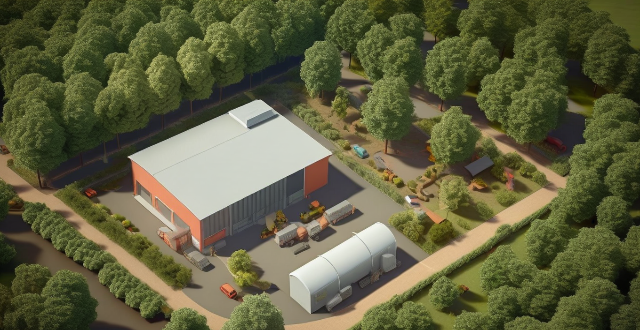
How much does it cost to offset a ton of carbon dioxide ?
The cost to offset a ton of carbon dioxide varies depending on the method used and the region where the offset takes place. Factors affecting the cost include the method of offset, region, project complexity, and verification and certification processes. The average cost of offsetting a ton of carbon dioxide ranges from $10 to $100 per ton. Tree planting, renewable energy projects, and carbon capture and storage are some common methods of offsetting carbon dioxide emissions.

How does sports sponsorship impact the economic development of a city or region hosting major sporting events ?
Sports sponsorship has a significant impact on the economic development of a city or region hosting major sporting events. It creates jobs, stimulates the tourism and hospitality industry, promotes infrastructure development, and enhances branding and promotion. However, it is essential to consider the potential challenges and work to address them effectively.

What are the top heritage sites to visit in your country ?
China is home to many heritage sites that are worth visiting. Here are the top ones: 1. Great Wall of China - A series of fortifications built along an east-to-west line across the historical northern borders of China. 2. Forbidden City - A palace complex in the heart of Beijing, home to 24 emperors from the Ming and Qing dynasties. 3. Potala Palace - A palace complex in Lhasa, Tibet Autonomous Region, that served as the residence of the Dalai Lamas until 1959. 4. Terracotta Army - A collection of terracotta sculptures depicting the armies of Qin Shi Huang, the first Emperor of China. 5. Li River and Karst Mountains - Located in Guilin, Guangxi Zhuang Autonomous Region, known for its stunning natural beauty characterized by crystal-clear rivers and towering limestone peaks.
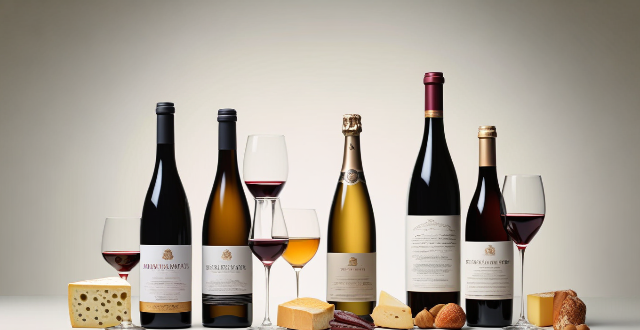
What are the best regions for wine and cheese tasting tours ?
The best regions for wine and cheese tasting tours include France, Italy, Spain, California, Australia, South Africa, New Zealand, Chile, and Argentina. Each region offers unique wines and cheeses that create a memorable experience for visitors.

What are the best domestic travel destinations for foodies ?
Best Domestic Travel Destinations for Foodies Traveling to different places is not only about exploring the culture and history of a region, but also about experiencing the local cuisine. For foodies, finding the best domestic travel destinations that offer unique and delicious food experiences is essential. Here are some of the top destinations in the United States for food lovers: 1. New York City, New York 2. San Francisco, California 3. Austin, Texas 4. Chicago, Illinois 5. New Orleans, Louisiana

In what ways does cultural fusion influence food and cuisine around the globe ?
Cultural fusion significantly impacts global cuisine by introducing diverse ingredients, techniques, and fusion cuisines. It encourages culinary innovation and creativity while also promoting the globalization of food cultures. Additionally, cultural fusion affects eating habits and dietary restrictions worldwide.

How do different regions of the world experience climate variability differently ?
The article discusses climate variability and how different regions of the world experience it. Tropical regions have high temperatures and rainfall but also extreme weather events like hurricanes and monsoons, influenced by El Niño Southern Oscillation (ENSO). Arid and semi-arid regions face very little precipitation and high temperatures, making them vulnerable to climate change impacts. Polar regions experience extreme cold temperatures and limited sunlight in winter, with rapid warming due to climate change leading to melting ice caps and rising sea levels. Temperate regions have moderate temperatures and seasonal precipitation variations, with four distinct seasons and varying weather patterns, but can still be affected by extreme weather events like floods, droughts, and heatwaves.

How does climate vulnerability differ across regions and countries ?
Climate vulnerability varies significantly across regions and countries due to geographical, socio-economic, infrastructure, governance, and cultural factors. Coastal areas are more vulnerable to rising sea levels, while inland areas face challenges related to droughts and heatwaves. Developed nations have more resources for adaptation, while developing nations often lack the financial and technical capacity. Urban areas might have better access to resources but can suffer from heat island effects, while rural areas could be impacted by changes in agricultural productivity. Areas with robust infrastructure and advanced technologies are less vulnerable, while those lacking these face higher risks. Stable governments can develop long-term climate policies, while unstable regions might lack the continuity needed for effective climate action. Communities with strong social networks and high levels of education about climate change are more likely to engage in adaptive behaviors. Addressing climate vulnerability requires tailored approaches that consider each area's unique circumstances and needs.

In which regions of the world are earthquakes most common, and why ?
**Earthquakes: Understanding the Most Common Regions and Their Causes** Earthquakes are natural disasters that can occur worldwide but are most common in specific regions due to tectonic activities. The theory of plate tectonics explains how Earth's crust is divided into plates that interact through processes like subduction, collision, and separation, causing seismic activity at their boundaries. Major earthquake-prone regions include the Pacific Ring of Fire, the Himalayan Belt, the Mediterranean-Himalayan Belt, South America, and New Zealand. These areas experience frequent and intense earthquakes due to their locations along multiple convergent plate boundaries and active subduction zones. Factors contributing to high seismic activity include plate boundaries, subduction zones, transform faults, and volcanic activity. Understanding these patterns is crucial for earthquake preparedness and mitigation efforts.

Can you recommend luxury resorts that offer unique cultural experiences ?
This article recommends several luxury resorts worldwide that offer unique cultural experiences. The Four Seasons Resort Bali at Sayan, Amangiri, Capella Ubud, The Brando, Como Shambhala Estate, Hacienda de San Antonio, and Mandapa, Ritz-Carlton Reserve are among the featured resorts. Each provides a blend of luxurious accommodations and immersive cultural activities such as dance classes, guided hikes, spiritual journeys, cooking classes, and more. These resorts are located in diverse settings, including jungles, deserts, mountains, and coastal areas, offering opportunities to explore local traditions, cuisine, history, and natural beauty.
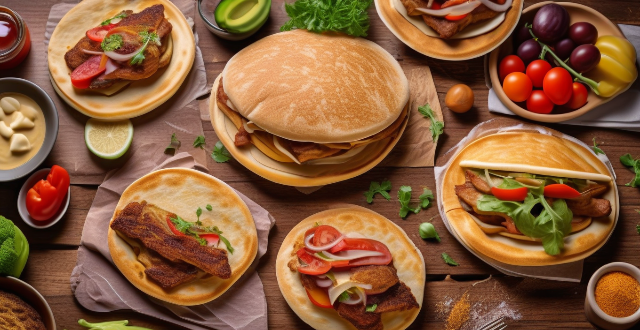
What makes the flavor of street tacos in Mexico different from those found elsewhere ?
The flavor of street tacos in Mexico differs from others due to authentic ingredients, traditional cooking methods, regional specialties, vibrant street food culture, and a variety of condiments.

How can I make a family dinner more interactive and engaging ?
Making family dinners more interactive and engaging requires planning and creativity. Incorporating themes, open-ended questions, cooking tasks, gratitude jars, and music can create an enjoyable experience that brings the family closer together while promoting communication, teamwork, and positivity.

Can you provide examples of cultural fusion in different parts of the world ?
Cultural fusion, also known as cultural integration or hybridity, is a phenomenon that occurs when two or more distinct cultures interact and blend to create a new, unique culture. This process can be observed in various parts of the world, where different cultures have come together to form new traditions, languages, cuisines, art forms, and lifestyles. Some examples of cultural fusion include Korea-Japan cultural exchange, India-Pakistan cultural influence, Spain-Morocco cross-cultural interaction, France-England historical interactions, Mexico-United States border culture, and Caribbean-African diasporic cultures. These examples illustrate how cultural fusion can lead to the creation of new and exciting forms of expression across different aspects of society.

What are some traditional South American festivals that I shouldn't miss ?
South America is a continent rich in culture, traditions, and festivals. Some of the most popular traditional South American festivals include Carnival in Rio de Janeiro, Day of the Dead in Mexico, and Inti Raymi in Cusco, Peru. These festivals feature colorful parades, live music performances, traditional dances, and more. They are a chance for people to connect with their cultural roots and celebrate their heritage.

What are some creative family dinner ideas ?
Creative ways to make family dinners fun and enjoyable include themed dinner nights, cooking competitions, outdoor movie nights, story time, game night, and backyard campouts.